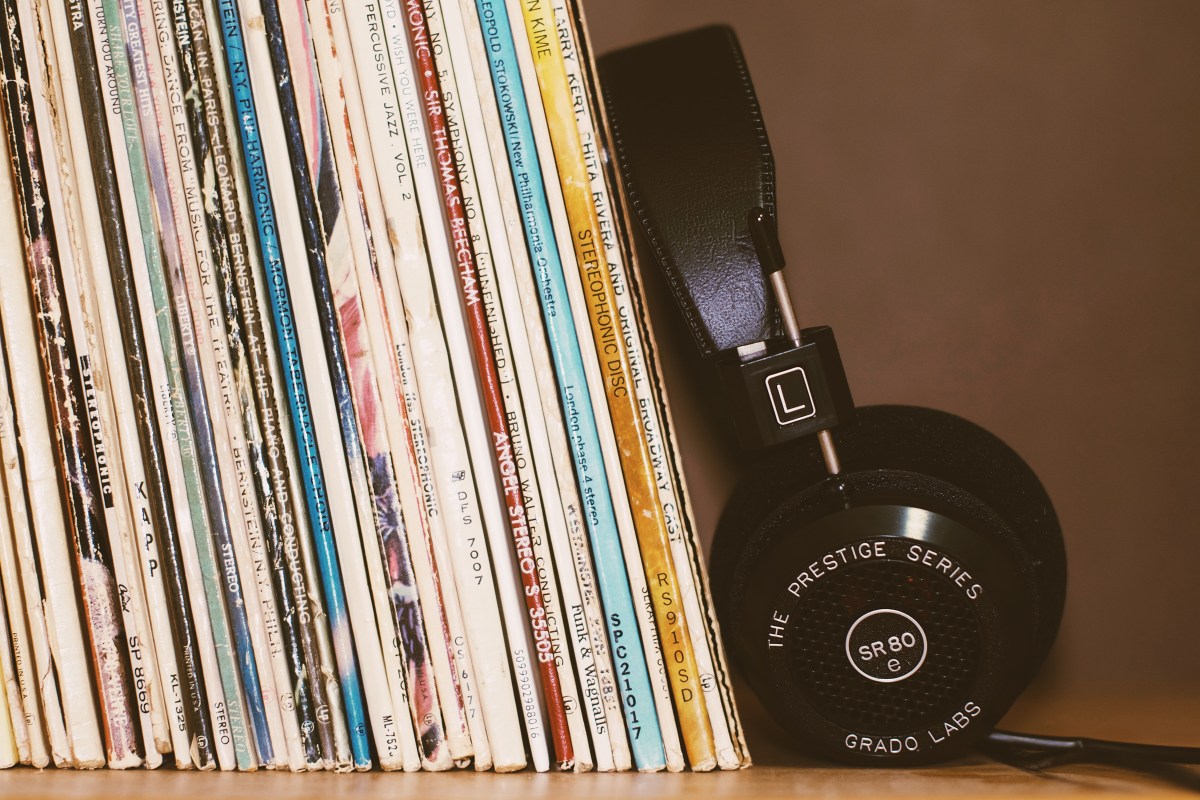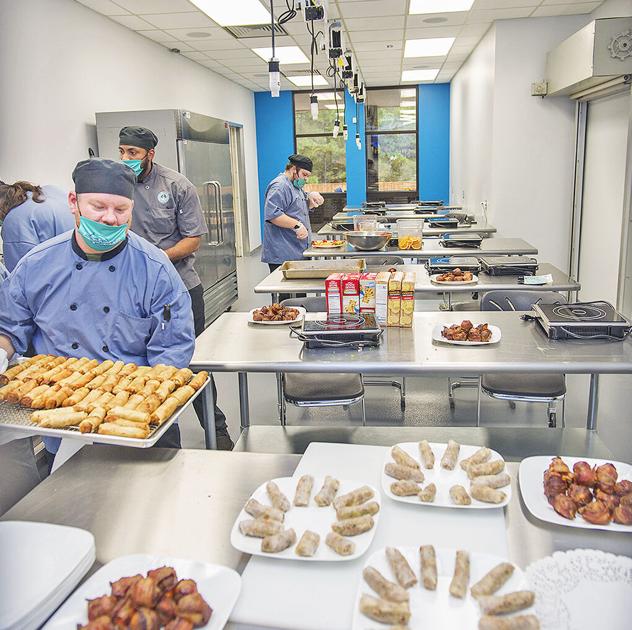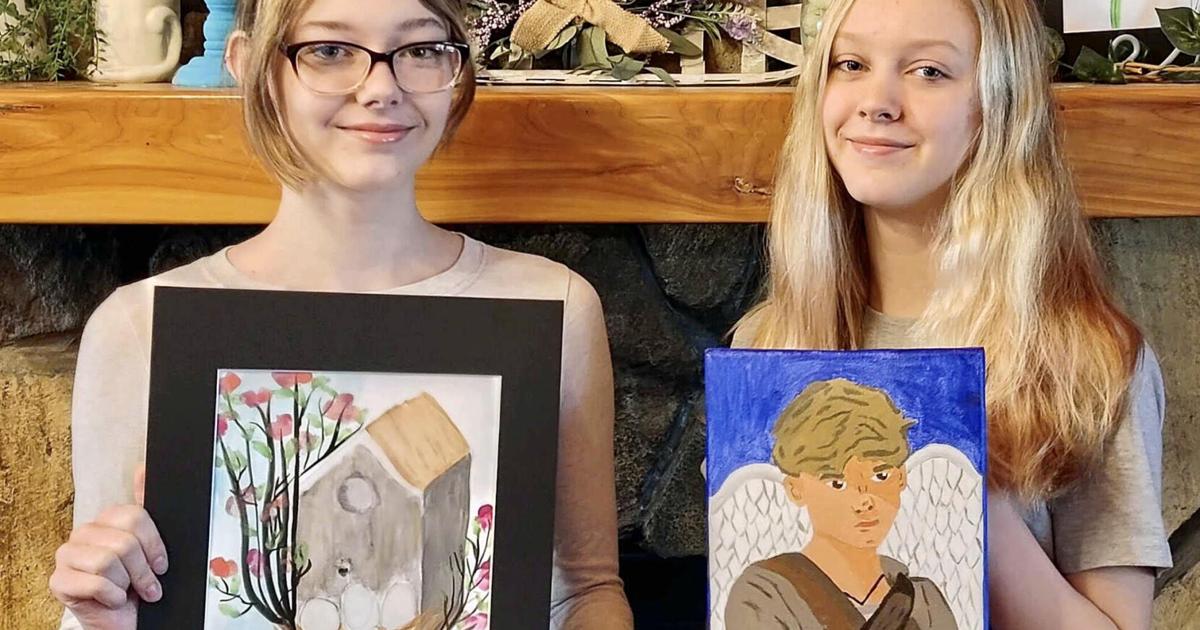
Duluth collective reckons with racial stereotypes in new art exhibit – Duluth News Tribune
DULUTH — Julia Cheng moves through the John Steffl Gallery, stopping at a 3-D sculpture. Photo collages folded into shapes of different sizes are positioned on the wall.
“We’ve got cranes, flowers, this is my frog. I learned when I was 3,” said Cheng of the origami paper-folding technique.
The sculpture, by Viann Nyguygen-Feng, is one of many in
The Twin Ports APIDA Collective
’s multimedia exhibit on display through March at the Duluth Art Institute.
“Like Me, Like You” kicks off with a virtual opening and artist talk from 5:30-7 p.m. Wednesday, Jan. 26. Attendees can register at
and will receive an emailed Zoom link.

Steve Kuchera / Duluth News Tribune
The Twin Ports APIDA Collective
, or TPAC, is a local group aimed at advocating and building awareness and equity for Asian Pacific Islander Desi American community in the Duluth-Superior area. And the exhibit is
the latest in a stream of efforts by the collective
to share experiences of an often underrepresented community.

Steve Kuchera / Duluth News Tribune
“Invisibility is the APIDA curse,” TPAC member Jennifer Lien told the News Tribune last fall.
“People are always saying, ‘I’m sorry for the emotional labor,’ but I feel like our narrative is nobody’s ever listened to us before, so to be invited to tell our story, to me, is an important part of this work,” she continued.
For the photo collage sculpture, conceptual artist Viann Nyguygen-Feng printed stacks of submitted images, which TPAC members folded into hearts, boats and flowers.

Contributed / Bobby Rogers, Walker Art Center
“It represents all of us,” Nyguygen-Feng said. “We have something unique to bring together. We form a beautiful cohesive whole.
“The sum is greater than all the parts,” she added.
During the News Tribune’s visit to the exhibit, Duluth painter Aya Kawaguchi said she creates her nature silhouettes on glass by whittling away bits of acrylic using a sharpened chopstick.
“Not the nice chopsticks, the really cheap ones. It doesn’t damage the surface of the glass,” she said.
Participating in TPAC and this exhibit have been beneficial for Kawaguchi in many ways.
“I have no experience growing up in the U.S., but my kids are struggling. They’re full Japanese. I’m seeing I can learn an approach to understand the situation they’re in right now,” Kawaguchi said.

Contributed / Laura Judd, Shawna Vine Photography
Other participating APIDA artists include Laura Judd, Dahee Kim and Matthew Koshmrl, Julie Kim, Sharon Kwong and Sharon Yung.
Not all who participated are artists, said Pakou Ly, who submitted for the exhibit a traditional Hmong outfit created by her mother.
“We’re preserving lessons learned from our families, preserving culture, preserving our history and we’re putting it on this very intimate display. It takes a lot of courage,” Ly said.
Cheng submitted professional and personal photographs.
An image of hers features a young woman learning Laotian dance from her father. It was taken in 2002, when Cheng was chief photographer at the Sentinel and Enterprise newspaper in Fitchburg, Massachusetts.

Contributed / Julia Cheng
“There’s a lot of work here that reflects the relationships between parents and daughters.
“The daughters just seem to either assume or receive or somehow carry a lot of burden with their parents, especially with Chinese culture,” said the Duluth woman.
Cheng’s parents are immigrants from China, she and her siblings were born in the U.S., and growing up as a first-generation citizen, she had one foot where her parents came from and one foot in American culture.
Cheng also unearthed for this exhibit dual images of her parents in the hospital after her father’s stroke.

Steve Kuchera / Duluth News Tribune
In one, her mother watches two nurses in blue scrubs tend to their patient. In another, her father in a hospital gown rests his arm on a pillow, his other hand in mid-air.
“It was probably the peak of my maturity as a photojournalist, so part of it was documenting this because it’s an important part of our family history,” Cheng said. “It’s painful, but some of the professional detachment also played a part.
“It’s been a long time since I shot these, and it’s still hard to look at them,” she said.
This set of images stuck out to Heather Halberg of Eau Claire, Wisconsin.
Halberg brought her 2-year-old to the Depot’s train museum, and filtering to the fourth floor with her family, she was pleasantly surprised with TPAC’s exhibit.
“You’re expecting what you’ve always seen on field trips as a kid. This exhibit is refreshing and unexpected,” Halberg said, adding: “You know someone hit on something that’s missing if it surprises you.”
Halberg noted the representation of the APIDA community, and of one’s elders.
If people aren’t familiar, there can be fear, apprehension or lack of familiarity when observing the elderly, well or ailing. Halberg works as a caregiver, and said she really appreciated seeing this representation, too.
You know someone hit on something that’s missing if it surprises you.
Heather Halberg, Eau Claire, Wisconsin
Of the exhibit as a whole, Halberg added: “It’s beautiful. It’s good for all of us. It’s good for my son.”
Kim Nordin said the exhibit is good for her son, too.
The collective commissioned works from the Duluth jewelry-maker behind
, who made a ring with a crescent moon hugging a large labradorite — a stone for transformation — and a bracelet featuring a keshi pearl mounted on a cooper-cast fern leaf.
Contributing to “Like Me, Like You” prompted Nordin to look inward to her Asian-American identity and the experiences that make her who she is.
“How can I use that to help heal myself and also to create a path for my son, who’s half-Asian, so he doesn’t struggle so much with identity?” she said. “He sees this, and this is representation of our people.”

Contributed / Sharon Kwong
It doesn’t matter where we’re from, it turns out we all have a lot in common in terms of what we want in our lives, how we want to raise our children, what we want to do and how we want to go about contributing to our communities, Sharon Kwong told the News Tribune.
TPAC members recently launched an Education Equity Advisory Committee with Duluth Public Schools. They’re looking into nonprofit status and into building a website, where they hope to digitally house some of these works.
“Like Me, Like You” turned out to be more than Cheng imagined.
“Our exhibit was going to be about a sense of displacement … I don’t think I agree with that anymore. Out of our relationships, the strength of our family ties, our friendships, our ties with each other, we have created a place for ourselves here.
“We’ve made a home for ourselves here,” Cheng said.
- What: “Like Me, Like You” virtual opening and artist talk
- When: 5:30-7 p.m. Wednesday, Jan. 26
- Where: Visit
to register; attendees will receive an emailed Zoom link to attend.
View the in-person exhibit





